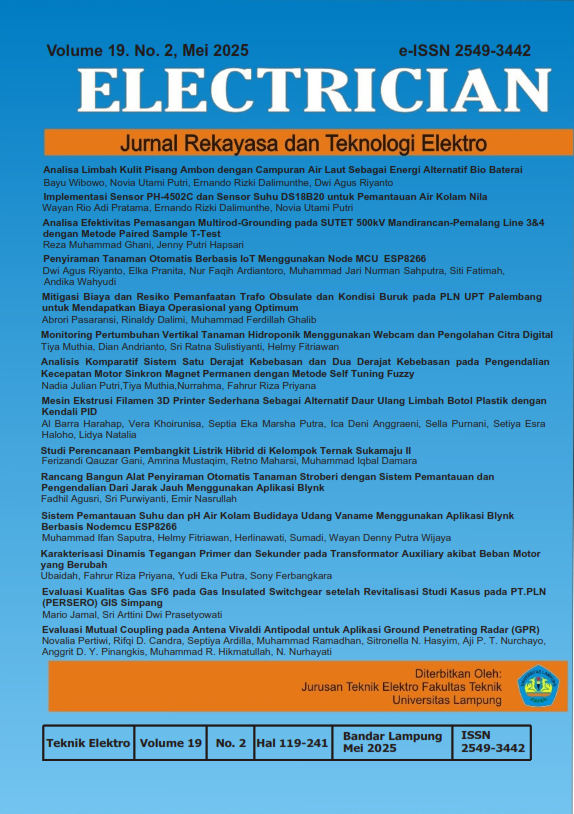Analisa Limbah Kulit Pisang Ambon dengan Campuran Air Laut Sebagai Energi Alternatif Bio Baterai
Main Article Content
Abstract
A battery is a device that can store electrical energy. Batteries are currently widely used for human
needs such as batteries in clocks, remotes and children's toys. The batteries currently used by humans are disposable batteries, so over time they can cause environmental pollution because batteries are made from chemicals [1]. This research aims to reduce battery waste by using Ambon banana peels as a substitute for battery chemical content. The battery will be made from pure Ambon banana peel which contains potassium and chloride [2]. Chloride is a strong electrolyte that can conduct electric current and to get more electric current, Ambon banana peel is mixed with sea water. This research compares the length of use between batteries that use a seawater mixture and those that do not use a seawater mixture that will be installed on a wall clock. Batteries that use sea water have a battery life of 9 hours with a ratio of more sea water, the same amount, and more banana peels. The voltage produced by more sea water is 1.53 V with a current of 0.00069 and a power of 0.0010557 W. The voltage produced by the same ratio of sea water and banana peel is 1.65 V with a current of 0.00059 A and power 0.0009735 W. The voltage produced by comparing banana peels is more than sea water at 1.43 V with a current of 0.00064 A and a power of 0.0009152 W, while the battery that is not mixed with sea water only lasts 4 hours with the resulting voltage of 1.44 V with acurrent of 0.00082 and a power of 0.001180 W. So it can be concluded that research using an equal ratio of sea water and banana peel is the most optimal
comparison in this research because it has the highest stress level.
Chemicals; Ambon Banana Peel, Sea water, Electrolyte, Bio Battery.
Downloads
Article Details

ELECTRICIAN is licensed under a Creative Commons Attribution-NonCommercial 4.0 International License
